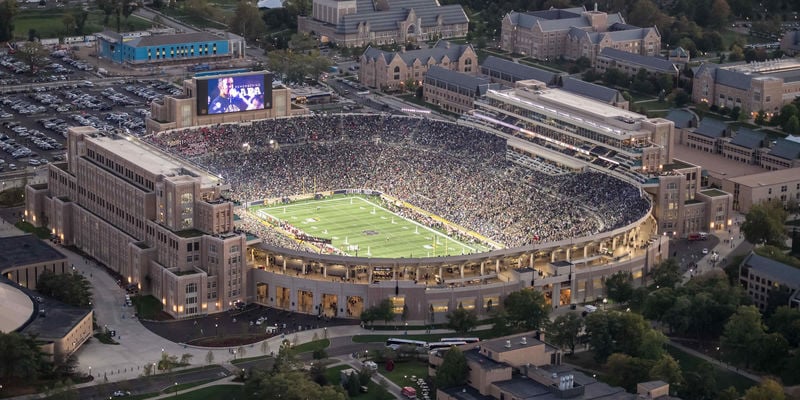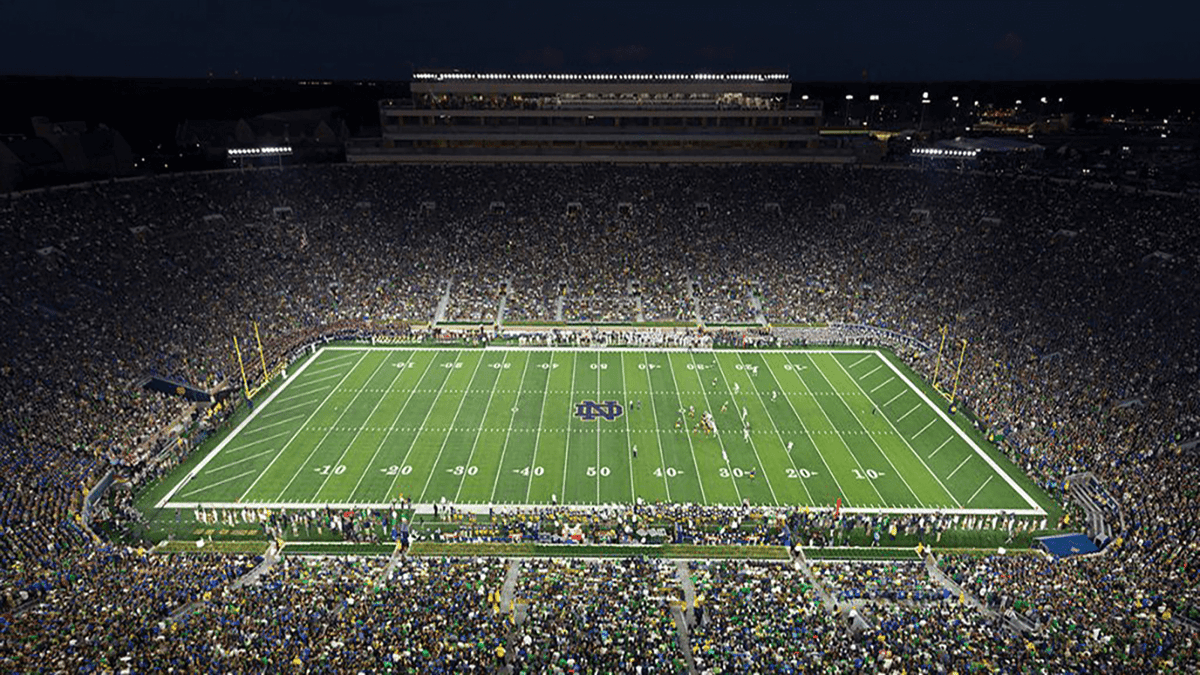

Notre Dame Stadium
College/University
About Notre Dame Stadium
For all the legendary players and memorable moments it has hosted over the past 449 games, Notre Dame Stadium has unquestionably developed a lore of its own.
The stadium, which celebrated its 85th anniversary in 2015, continues to be one of the most recognizable and revered structures in the world of sport.
It was the success of Knute Rockne’s football teams that prompted the addition of the original Notre Dame Stadium to the University’s athletics plant back in 1930. The spirit that was imbued by that Rockne era – and has been sustained by seven Heisman Trophy winners and dozens more All-Americans who have competed there – has changed little in eight decades of football at Notre Dame Stadium
Originally designed by Osborn Engineering Company - the same firm that designed Comiskey Park in Chicago and New York's Yankee Stadium and Polo Grounds.
The total cost of construction exceeded $750,000 and it was patterned on a smaller scale after the University of Michigan’s stadium. The 1996 season was the final one played with the customary 59,075 fans at Notre Dame Stadium. A $50-million expansion adding over 21,000 seats was completed before the 1997 kickoff, bringing capacity to its present-day 80,795.
Though Rockne had a chance to coach in the new facility only in its initial season of use, he took a personal hand in its design. The sod from Cartier Field was transplanted into the new Stadium, but Rockne insisted on its use for football only. He kept the area between the field and the stands small to keep sideline guests, as he called them, to a minimum – and he personally supervised the parking and traffic system that basically is the same one in use today.
Travel details
Located on the campus of the University of Notre Dame
